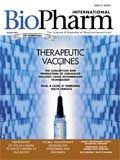Here's to a Year of Compromise
The benefits of harmonization may be on industry's wish list, but buying into change is another story.
It is in the New Year that we often set goals to improve ourselves, whether it's trying to get fit, move up the career ladder, spend more time helping others in need, or any other number of personal quests. But individuals aren't the only ones who make long-term goals—so do governments, organizations, and for our purposes, this industry. Harmonization of drug development and manufacturing approaches comes to mind.

Angie Drakulich
I'm a big supporter and follower of harmonization initiatives, but I get the feeling that not everyone in industry is as gung-ho about the idea. At several industry meetings during the past year, I've asked people what they think of harmonization and whether they believe certain aspects of pharma manufacturing will ever be harmonized. I've asked conference participants, for example, about the necessity of each nation having its own pharmacopeial guide and of the existence of an international pharmacopeial guide. For biologic-license-applicants working to bring a product to the global market, is there a way to avoid filling out the same information on 20 different forms? Inspections are another area lacking harmonization. We all know how many audit or inspection teams that companies must accommodate in a given year. Most of the answers I've received are along the lines of, " I don't know," "They would never agree to compromise on that," or, "There's too much national pride for one country to change its standards to match another's."
I get that compromise is difficult. In fact, I spent several years working for a nonprofit focused on the work of the United Nations, so I understand all too well how much effort is required to engage productive dialogue and garner compromise among a diverse and global audience. I also get that the biopharmaceutical industry is highly protective of its information and practices—it is a competitive, patent-based, trillion-dollar industry after all. But I also think that some of the key elements of harmonization are getting lost in translation.
Industry seems to want globally standardized approaches to their processes and quality systems as well as minimal routes for filing marketing applications and other required documents. Reaching these goals would make life easier for all parties involved. Having an agreed-upon, worldwide approach to quality and supply-management, for example, could literally solve many of the drug-product contamination and adulteration issues that have plagued the industry in recent years. And yet, many companies and national regulatory or standard-setting bodies seem unwilling to give up their current practices or accept that another company, organization, or nation for that matter, may have a better way of doing things.
Perhaps my vision of global harmonization is too lofty or naïve. But there is reason to hope. The International Conference on Harmonization was established in 1990 with the aim of increasing "international harmonization of technical requirements to ensure that safe, effective, and high quality medicines are developed and registered in the most efficient and cost-effective manner." In its 20-plus years, ICH has managed to gain consensus across North America, the European Union, and Japan, on 16 Efficacy guidelines, 10 Quality guidelines, 9 Safety guidelines, and has several multidisciplinary guidelines in the pipeline. The members of ICH's Global Cooperation Group extend the reach of these guidelines to eight additional countries, including the leading markets in Asia.
Other global standard-setting bodies are working to shape global industry practice. And new industry groups working to share best practices throughout the world seem to be popping up every month. I hope you will take time to learn more about global harmonization efforts and talk with your colleagues about how your organization might become involved. In the meantime, BioPharm International will do its best to keep you apprised of happenings tied to harmonization and what it means for your day-to-day operations—and that's just one of many resolutions we intend to keep this year.
Angie Drakulich is the editorial director of BioPharm International.
Editor's Note: Michelle Hoffman, previous editorial director, has moved on to pursue new scientific opportunities. We have the highest regard for her and wish her all the best. As the new Editorial Director, I have many hopes and goals for BioPharm International in the year ahead. Our team will be working to improve the types of articles and resources we bring to you in print and online. I am also happy to announce that 2012 is the 25th anniversary of BioPharm International. We will be celebrating the occasion with retrospective and forward-looking articles throughout the year. We welcome your ideas and feedback. Email adrakulich@advanstar.com

VERAXA and Voyager to Create Combined Business for Advancing Pipeline of Next-Gen Cancer Therapies
April 23rd 2025The proposed business combination would create a publicly traded, clinical-stage biopharmaceutical company that will focus on developing a pipeline of next-generation cancer therapies.
MHRA Approves GSK Therapy Combinations for Multiple Myeloma
April 21st 2025Belantamab mafodotin is approved in combination with bortezomib plus dexamethasone in patients who have had at least one prior therapy, and in combination with pomalidomide plus dexamethasone for those who have had a prior therapy including lenalidomide.
Tokyo University of Science Research Team Explores Improved Delivery of Antisense Oligonucleotides
April 18th 2025Using cholesterol-modified oligonucleotides, the research team aims to improve the delivery of antisense nucleotide-based therapies for treating neurodegenerative diseases and brain cancers.